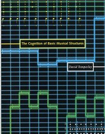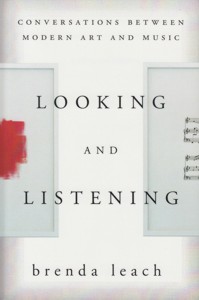
The Cognition of Basic Musical Structures
Temperley, David
MIT Press. 2001Ficha técnica
- EAN: 9780262701051
- ISBN: 978-0-26270105-1
- Editorial: MIT Press
- Fecha de edición: 2001
- Encuadernación: Rústica
- Dimensiones: 17,5x22,5
- Idioma: Inglés
- Nº páginas: XVI+404
Agotado
Agotado en la editorialPVP. 46,05€
Añadir a la Lista de deseos
In this book David Temperley addresses a fundamental question about music cognition: how do we extract basic kinds of musical information, such as meter, phrase structure, counterpoint, pitch spelling, harmony, and key from music as we hear it? Taking a computational approach, Temperley develops models for generating these aspects of musical structure. The models he proposes are based on preference rules, which are criteria for evaluating a possible structural analysis of a piece of music. A preference rule system evaluates many possible interpretations and chooses the one that best satisfies the rules. After an introductory chapter, Temperley presents preference rule systems for generating six basic kinds of musical structure: meter, phrase structure, contrapuntal structure, harmony, and key, as well as pitch spelling (the labeling of pitch events with spellings such as A flat or G sharp). He suggests that preference rule systems not only show how musical structures are inferred, but also shed light on other aspects of music. He substantiates this claim with discussions of musical ambiguity, retrospective revision, expectation, and music outside the Western canon (rock and traditional African music). He proposes a framework for the description of musical styles based on preference rule systems and explores the relevance of preference rule systems to higher-level aspects of music, such as musical schemata, narrative and drama, and musical tension.
CONTENIDO
1. Introduction
-An unaswered question
-Goals and methodology
-Music, cognition and music theory
-The input representation
-The preference rule approach
-The implementation strategy
I. Six preference rule systems
2. Metrical structure
-Meter
-Previous research on metrical analysis
-A preference rule system for meter
-Implementation
-Tests
-Problems and possible improvements
-Other factors in metrical structure
-Choosing the right tactus
3. Melodic phrase structure
-Musical grouping and phrase structure
-Studies of musical grouping in psychology
-Models of grouping structure
-A preference rule system for melodic phrase structure
-Implementation and tests
-Grouping in polyphonic music
4. Contrapuntal structure
-Counterpoint
-Sequential integration in auditory psichology
-Computational models of contrapuntal analysis
-Implementation
-Tests
5. Pitch spelling and the tonal-pitch-class representation
-Pitch-class, harmony, and key
-Spatial representations in music theory
-Tonal-pitch-class labeling
-A preference rule sistem for tonal-pitch-class labeling
-Implementation
-Tests
6. Harmonic structure
-Harmony
-Experimental and computational work on harmonic analysis
-A preference rule system for harmonic analysis
-Implementation
-Some subtle features of the model
-Tests
-Other aspects of harmonic structure
7. Key structure
-Key
-Psychological and computational work on key
-The Krumhansl-Schmuckler key-finding algorithm
-Improving the algorithm's performance
-Modulation
-Implementation
-Tests
-An alternative approach to modulation
II. Extensions and implications
8. Revision, ambiguity, and expectation
-Diachronic processing and ambiguity
-Modeling the diachronic processing of music
-Examples of revision
-Revision in tonal analysis
-Synchronic ambiguity
-Ambiguity in contrapuntal structure
-Ambiguity in meter
-Expectation
9. Meter, harmony, and tonality in rock
-Beyond common-practice music
-Syncopation in rock
-Applications and extensions of the syncopation model
-Harmony in rock
-Modality and tonicization in rock
10. Meter and grouping in African music
-African rhythm
-Meter in african music
-How is meter inferred?
-Western and African meter: a comparison
-Hemiolas and the "standard pattern"
-"Syncopation shift" in African music
-Grouping structure in African music
-Conclusions
11. Style, composition, and performance
-The study of generative processes in music
-Describing musical styles and compositional practice
-Further implications: is some music "nonmetrical"?
-Preference rules as compositional constraints: some relevant research
-Preference rule scores and musical tension
-Performance
12. Functions of the infraestructure
-Beyond the infrastructure
-Motivic structure and encoding
-Musical schemata
-Tension and energy
-The functions of harmony and tonality
-Arbitrariness
-Explaining musical details: an exercise in recomposition
-The power of common-practice music
Appendix: List of rules
Notes
References
Author index
Subject index





